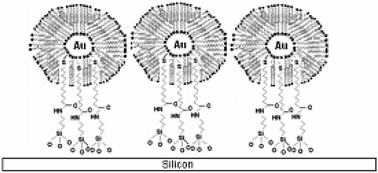Chemically bound gold nanoparticle arrays on silicon: assembly, properties and SERS study of protein interactions†
Abstract
A highly reproducible and facile method for formation of ordered 2 dimensional arrays of CTAB protected 50 nm

* Corresponding authors
a
National Center for Sensor Research, School of Chemical Sciences, Dublin City University, Dublin 9, Ireland
E-mail:
tia.keyes@dcu.ie
A highly reproducible and facile method for formation of ordered 2 dimensional arrays of CTAB protected 50 nm

 Please wait while we load your content...
Something went wrong. Try again?
Please wait while we load your content...
Something went wrong. Try again?
A. Kaminska, O. Inya-Agha, R. J. Forster and T. E. Keyes, Phys. Chem. Chem. Phys., 2008, 10, 4172 DOI: 10.1039/B803007C
To request permission to reproduce material from this article, please go to the Copyright Clearance Center request page.
If you are an author contributing to an RSC publication, you do not need to request permission provided correct acknowledgement is given.
If you are the author of this article, you do not need to request permission to reproduce figures and diagrams provided correct acknowledgement is given. If you want to reproduce the whole article in a third-party publication (excluding your thesis/dissertation for which permission is not required) please go to the Copyright Clearance Center request page.
Read more about how to correctly acknowledge RSC content.
 Fetching data from CrossRef.
Fetching data from CrossRef.
This may take some time to load.
Loading related content
